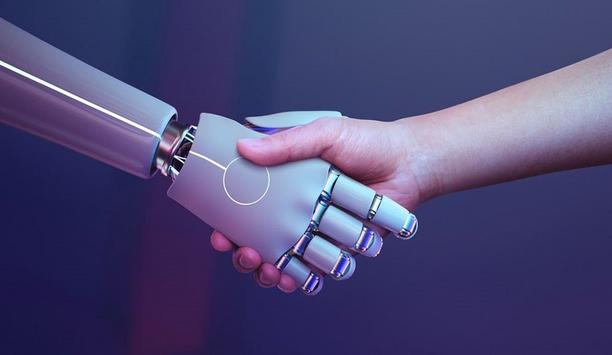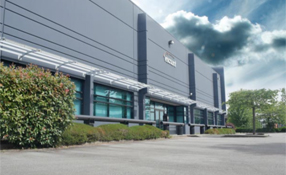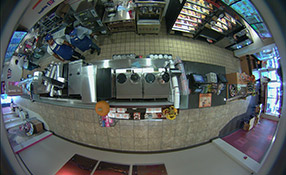As a “futurist” for lock manufacturer Allegion, Robert C. Martens says he is “part strategist, part predictor” – looking at megatrends, current events, technology changes, and how those changes impact Allegion’s business customers and partners. Spanning both the commercial and residential businesses, Martens considers various scenarios for business leaders and partners, specifically regarding where technologies and electronics are going.
Today, he spends a lot of time thinking about the Internet of Things. Martens sees a tremendous amount of “disruptive innovation” in the market, specifically in the residential market where the Internet of Things (IoT) will be a huge force, led by “mega-tech” companies such as Apple, Google and Samsung. He expects the disruption to spill over into the commercial markets sooner or later.
IoT is Compelling And Is Here To Stay!
IoT may be a buzzword, but it’s an older term that’s been around since 1999. It’s also a trend that’s here to stay, whether we like it or not. Driving the IoT is a proliferation of lower-costs sensors, combined with burgeoning availability of inexpensive bandwidth, and less costly computer processing. In fact, sensor costs are down 50 percent, bandwidth costs are down 50-fold, and processing power costs are down 60-fold since 2010. Taken together, this is a formula to combine massive amounts of data with low-cost processing to analyze the data to find patterns in the seeming chaos. “It sounds confusing, but it doesn’t have to be,” says Martens. “Everyone has the ability to play there. It’s not a space that will exclude people, it’s just a matter of what level they engage.”
The IoT is a broad term that encompasses connected homes, smart automobiles, wearables, smart cities and industrial automation. IoT represents the third evolution of the Internet. The first came in the 1990s when there were about 1 billion people communicating through PCs and desktop computers. In the early 2000s, about 2 billion were connecting using mobile devices such as tablets and smart phones. Projecting progress of the Internet of Things, there may be between 50 and 200 billion IP-connected devices by 2025. Sensors will send data via the Internet with no human intervention. “There will be an exponential leap in the amount of data being thrown to the Internet,” says Martens.
Allegion’s Robert C. Martens sees a tremendous amount of “disruptive innovation” in the market, specifically in the residential market where the Internet of Things (IoT) will be a huge force, led by “mega-tech” companies such as Apple, Google and Samsung |
Mega-tech Companies Will Drive IoT
The interest of mega-tech companies in the Internet of Things will drive how technology is implemented. For example, Apple’s HomeKit is a built-in iOS 8 feature that allows iPhone and iPad users to communicate with and control products in a connected home ecosystem. It promises a more integrated, holistic experience for home automation. A homeowner can tell Siri to unlock a door.
Martens expects more dominance of networking standards such as Bluetooth Low Energy (LE), low-power WiFi taking the place of radio communication standards such as Zwave and Zigbee. Rather than communicating with each other, devices will be communicating via the cloud using application protocol interfaces (APIs).
Power And Connectivity Still A Challenge?
Power consumption is always a concern for IoT devices, especially locks. Allegion has a HomeKit-enabled lock called the Schlage Sense that uses Bluetooth LE to enable batteries to last more than a year.
Martens also points out that connectivity won’t be the deciding factor for homeowners’ lock purchases anytime soon. Rather, people will still shop for individual locks and other devices, and connectivity will be flexible. For its part, Allegion is looking to make its locks as flexible as possible – able to use various platforms. Homeowners can operate the devices alone, or put them together will compatible platforms. “Our goal is to load the lock with as many options as possible, so however you want to access that door, you can do it,” says Martens.
An example of new lock functionality is the use of accelerometers in locks that can sense the difference between a door that is slammed or kicked in (which could be tied into an alarm). An autolock feature allows a door to lock automatically after 15 seconds or 2 minutes (selectable), thus increasing security if a homeowner forgets to lock the door.
IoT Crossover From Residential To Commercial
“More and more people are walking through the door wanting to use their phone. We are seeing significant amounts of automation moving into the commercial space. IoT is only going to move as fast and be as successful as integrators allow it to be”, predicts Martens |
As home automation catches on, it’s just a matter of time before end users begin expecting the same automation experience in the commercial setting. “It’s happening. The real question is how long before people say, I have this at home, I need it at work,” Martens says. You can already see the early signs with a shift toward the idea of using a smart phone in lieu of a card-based credential to open a door.
“More and more people are walking through the door wanting to use their phone. We are seeing significant amounts of automation moving into the commercial space. IoT is only going to move as fast and be as successful as integrators allow it to be. If integrators drag their feet, other integrators will take their place. It is absolutely a requirement for someone with tribal knowledge of security for IoT to become a reality. You need physical security knowledge. The people who drive it, they are going to see a significant surge in demand for their services.
“Disruption is flowing from residential to commercial,” Martens says. “As a leader in the commercial and residential space, we [at Allegion] get this, we see the disruption. It’s a matter of change management, a question of whether the integrator community is ready to take this on. I’m confident they are starting to. The people I fear for are those who think it’s a flash in the pan. It’s not, and those who get a head start will do extremely well. It will be a fantastic business, all it does is expose more their deep, rich knowledge [of security]. Somebody has to put sensors in the right order to do it right.”










































